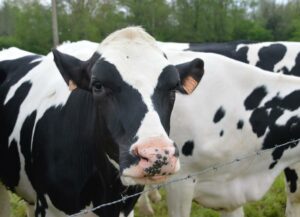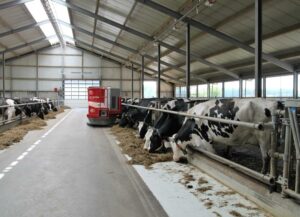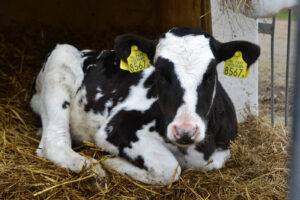Fernando Díaz
Sainfoin (Onobrychis viciifolia) is a perennial legume crop grown for centuries in Europe and the Middle East. It is named commonly “healthy hay” largely due to its condensed tannins (CT) content which inhibits protein degradation in the rumen, thereby minimizing the incidence of ruminal tympany (bloat). Additionally, sainfoin has anthelmintic activity against intestinal parasites.
In recent years there has been a renewed interest in the crop because the presence of CT in the forage has a positive effect on the reduction of ammonia and enteric methane emission from ruminants.
Researchers from the Centro de Investigación y Tecnología Agroalimentaria of Aragón, Zaragoza, Spain, evaluated the effects of preservation method (hay and silage) of sainfoin on nutrient composition and CT content of the forage. Sainfoin (variety Reznos) was sown in autumn 2013 in a silt-loam soil at seeding rates of 100 kg/ha. No mineral fertilizer was applied. Forage was harvested manually in May 2015 at the late bloom stage. Part of the forage was naturally sundried to obtain hay, and the other part destined to make silage was wilted one day, chopped and vacuum-ensiled in plastic bags for 82 days.
The results, published in Animal Feed Science and Technology, showed the following differences between preservation methods and the fresh forage (table):
- Preservation affected sainfoin nutrient composition. Both preserved forages had lower protein and greater fiber contents than the fresh forage.
- Comparing with fresh forage, hay only affected the fiber-bound CT concentration (2.3 vs. 1.8 eq-g CT/kg DM in the fresh forage).
- Ensiling; however, reduced total polyphenols (34.1 vs. 44.6 eq-g tannic acid/kg DM in the fresh forage), total CT (33.2 vs 38.6 eq-g CT/kg DM), and extractable CT (8.2 vs 31.6), and increased both protein- (17.0 vs. 5.3) and fiber-bound CT (7.9 vs. 1.8). During the ensiling process, the reactions between the polyphenolic compounds and other plant molecules increase the binding of CT to protein and/or fiber.
In conclusion, polyphenols and condensed tannins contents were more affected in the silage than in the hay. Therefore, hay might be the best preservation method for sainfoin.
References
- P.J. Rufino-Moya, M. Blanco, J.R. Bertolín, M. Joya. 2019. Effect of the method of preservation on the chemical composition and in vitro fermentation characteristics in two legumes rich in condensed tannins. Animal Feed Science and Technology. 251: 12 – 20.
- S. C. Sheppard, D. J. Cattani, K. H. Ominski, B. Biligetu, S. Bittman, E. J. McGeough. 2019. Sainfoin production in western Canada: A review of agronomic potential and environmental benefits. Grass Forage Sci.74:6–18.
© 2019 Dairy Knowledge Center. All Rights Reserved.









